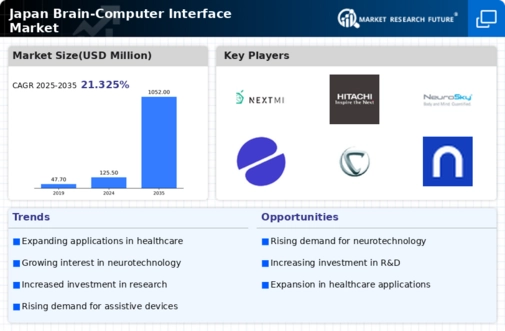The growing interest in neurotechnology is driving notable improvements in the Japanese brain-computer interface market. Japan's aging population, which calls for creative solutions for age-related health problems, especially in neurological disorders like stroke and dementia, is one of the major market drivers.
Businesses in this industry can investigate novel uses for brain-computer interfaces in a favorable climate thanks to the nation's strong emphasis on research and development, which is bolstered by government programs and technological financing. There are several opportunities, especially in the healthcare industry, where BCI technology might improve patient care and rehabilitation procedures.
Innovation in this field is also being aided by partnerships between commercial businesses, research institutes, and universities. Furthermore, Japan's focus on AI and robotics creates opportunities for BCI systems to be integrated with robotic technologies, opening the door to more sophisticated human-machine interaction.
The ethical concerns of BCI technology are becoming more widely recognized, according to recent trends, which has sparked conversations about legislative frameworks to guarantee its safe and responsible usage, especially in medical settings.
The Japanese government is promoting public-private partnerships to speed up development and deployment of this technology because it recognizes its potential to improve people's quality of life.
Additionally, the Japanese gaming and entertainment sector is starting to investigate the application of BCIs, which is generating interest and investment from customers. All things considered, the future of the Japanese brain-computer interface market is being shaped by the convergence of healthcare, technology, and public interest.








